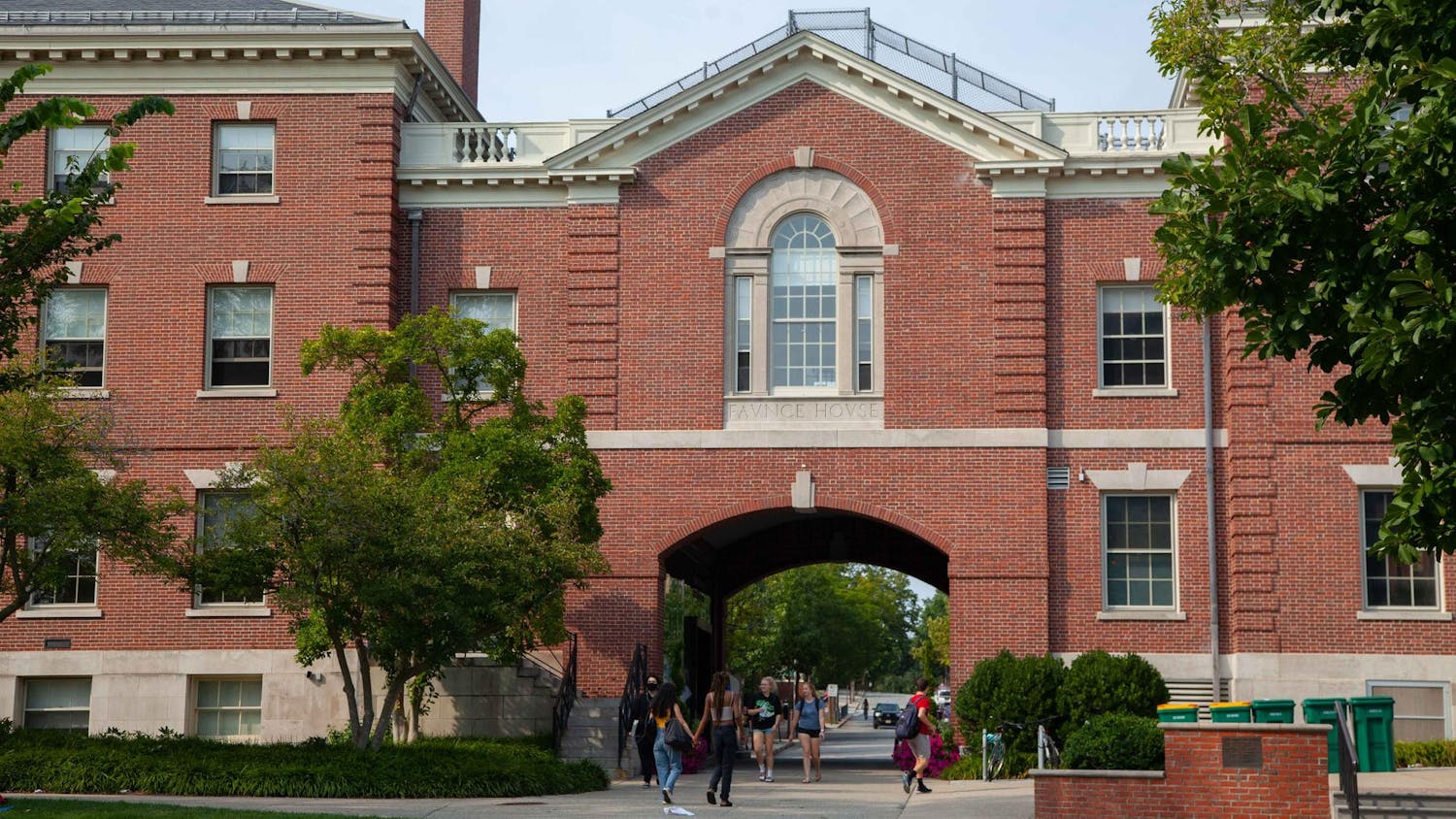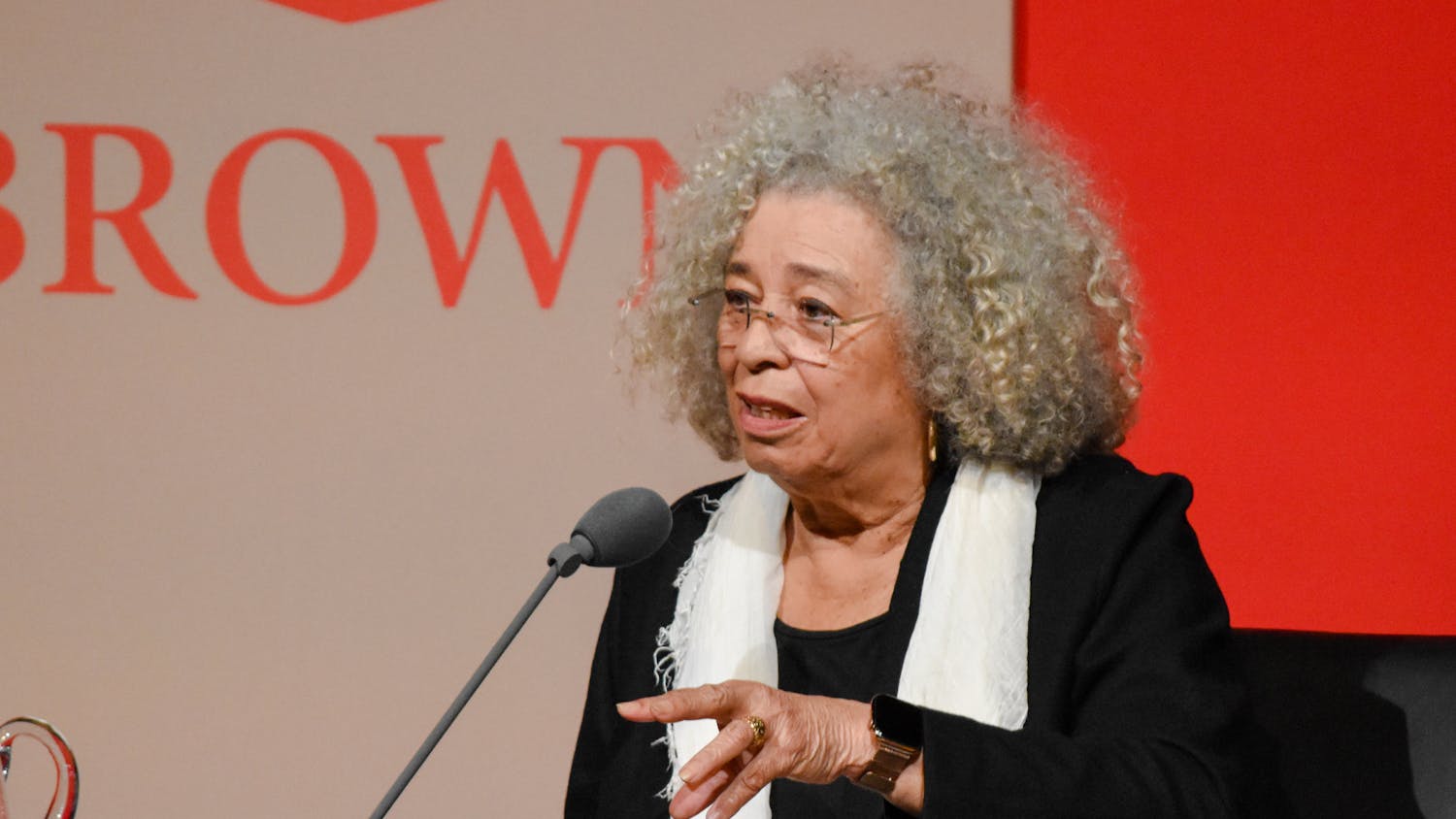A substantial portion of the curriculum for first- and second-year students at Alpert Medical School contains racially biased information, according to the findings of a group of students. The students surveyed curricular material for a final project in a class on race and medicine taught by Professor of Medical Science and Africana Studies Lundy Braun.
These findings of racially biased information prompted the formation of a task force made up of around 20 students, faculty members and administrators to reexamine the curriculum. Alan Tunkel, associate dean for medical education, Paul George, director for the second-year curriculum and the Primary Care-Population Medicine program, and Dick Dollase, director of the Office of Medical Education, are three of the key administrators spearheading the task force’s work.
While the administrative leaders on the task force are white men, many people of color are also guiding the effort. In addition to a diverse group of students, Tunkel said that faculty and alumni leaders like Joseph Diaz MD’96 MPH’00, associate professor of medicine, Tracey Guthrie, associate professor of psychiatry and human behavior, and Jeffrey Hines ’83 MD’86 are among the leaders of color who have been part of the efforts thus far.
Race-based diagnoses and treatment
Racial bias can affect the way medical treatment is taught and provided. Sarcoidosis, for example, can be found in white people and people of color, yet in the medical literature, it is often described as a “black” illness. The reverse can also hold true, as in the case of cystic fibrosis, where there is evidence to suggest that cases are often overlooked in black patients because it is a stereotypically “white” disease.
The medical literature surrounding colon cancer shows that black people are typically screened at lower rates, are given less comprehensive treatment and suffer worse outcomes from the disease than their white counterparts.
Antiquated ideas about race even play into certain physiological measurements — like the glomerular filtration rate, a measure of kidney function — that are calibrated differently for black people. Many spirometry machines, which measure lung function, have a button or switch on them labeled “black.”
Braun has traced these kinds of discriminatory measurements back to practices originating in plantation slavery, said Jennifer Tsai MD’18.
Tsai and Bryan Leyva MD’18, both of whom serve on the task force, emphasized the importance of context in racialized medical discussions, noting that it is currently lacking from the school’s curriculum.
“When there are differences in health outcomes by race, these differences are often not contextualized, so it sends off the message that these differences in health outcomes are due to race,” Leyva said. For instance, Med School faculty members mention little about housing conditions when teaching about the high risk of asthma in African Americans, she said.
A national problem
The problem extends beyond Alpert’s walls. It is one both created and perpetuated by the country’s medical establishment, Leyva said.
“There has been a recent trend towards more race-based guidelines,” he said, explaining that these guidelines direct doctors to make race a basis for their diagnoses without considering context.
The National Institutes of Health compels researchers to break down studies based on race, Tunkel said.
The NIH has also placed an emphasis on studying race as a biological category rather than a social one, Tsai said, adding that the ratio of NIH grants dedicated to studying race and genetics to grants focused on race and social factors was 500:1 between 1995 and 2005.
“The challenge is that faculty wants to teach students what the guidelines are,” Leyva said.
The Med School does not “teach to the test,” Dollase said.
But once students leave the Med School, they will have to face exams that use race-based clues to hint at the correct diagnosis, Tunkel said.
This is perhaps compounded by the way that many faculty members themselves were taught. “One of the issues in medicine is that many physicians have been taught that race is a biological construct,” Dollase said. “It’s hard to retrain physicians who have been trained in one way.”
Making curricular change
Yet Dollase said the University is strategically positioned to address these challenges.
The Med School was recently awarded a grant from the American Medical Association with the purpose of “accelerating change in education,” he said. As one of 11 schools awarded the grant, faculty members from Brown attend semiannual meetings to discuss teaching in medicine with representatives from other schools. The role of race in medical schools’ curricula has figured in those conversations, Dollase said.
As a part of that grant, Brown has gained access to the National Board of Medical Examiners, in addition to the more informal network of colleagues who write exam questions, with whom administrators already correspond.
In terms of addressing racial bias in the curriculum, Brown is at the forefront of the country’s medical schools, Tunkel said. The University of California at San Francisco and Barry Saunders, associate professor of social medicine at the University of North Carolina at Chapel Hill, have also been doing innovative work around race and medicine, he said. Existing medical literature says little about this topic, though a paper from University researchers is currently being peer reviewed.
Saunders has made two visits to the Med School to share the work he has been doing on UNC’s campus.
This is only one of a few steps that have already been taken to address the current problems with the curriculum. Braun’s lecture about racism and spirometry has been added to the pulmonary sciences section of the curriculum for all students. A book about implicit bias called “Blind Spot” is now required reading for all first-year med students, and first- and second-years will receive specific training on what implicit bias is and how it affects patient care.
Looking forward
Despite this progress, task force members said there is still more to be done. Leyva said he wishes that the epidemiological and pharmacological information taught to first- and second-year students were rooted in social and environmental factors.
Leyva and Tsai said they want to create a sense of urgency for their peers. An informal survey showed that a large majority of students feel confused about race and medicine, demonstrating the need for greater active support.
Part of the problem is institutional memory, Tsai said. Because students spend their third and fourth years with local mentors working in hospitals, there is little time to organize around issues like this, especially considering the heavy workload of medical school. Once students reach their third year, incoming students with no prior context are left to take up the mantle.
Despite the fast turnover for students, Leyva expressed enthusiasm that powerful administrators like Tunkel are sincerely invested in making a change.
Leyva and Tsai said they are excited about the potential to create change in the third- and fourth-year program, though both acknowledged the difficulties of doing so while being at the bottom of the ladder under a mentor with no affiliation to Brown.
The most important change going forward remains the addition of contextual understandings of racialized medical disparities, Leyva said.
“It’s not that we want them to remove the racial bias, but use it to understand the importance of the social construct,” Tunkel said.
Leyva also highlighted the importance of the task force in terms of opening the door for other minority groups to effect change at the Med School, citing recent discussions about gender-inclusive bathrooms and transgender health.
Despite the difficulties of trying to chip away at the issues of racial bias in the institution, Leyva said he sees this process as one that gives students power. “You can generate a sense of helplessness when you just learn that there are these differences, but you don’t know what to tackle. That’s the last thing we want students to feel,” he said.
“We want people to feel empowered that there are actually things they can advocate for to generate change in health,” he added. “But when you frame it as a biological construct, you create powerlessness that can be counterproductive.”




